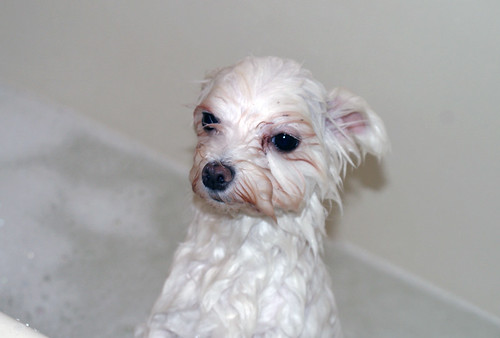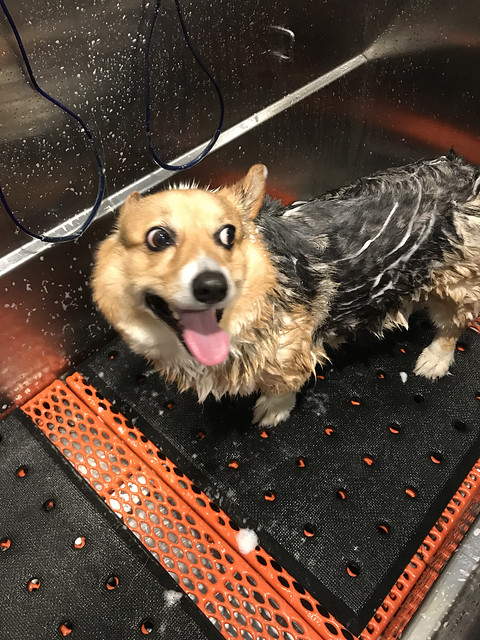We've had a few bumps in the road-- Chooey's eye surgery, Baby Girl's spaying and surgery, Asti's corneal ulcer due to old age... and Cheetos (don't get me starting with Cheetos). I got battle scars: attempted bites, scratch marks, and nail punctures.
Thousands of dangerous insects and bugs present today could harm you, your family, and even your pets. They could be living in your home right now. To prevent any life-threatening events, you need to be aware of some of the common dangerous bugs. Once you know more about them, you can avoid interacting with them and do whatever it takes to exterminate them.
Black Widow
A black widow is highly poisonous and has a venom that is 14 times even more potent than that of a rattlesnake. Though the death rate when bitten by this spider is 5%, they do cause several symptoms that may kill you if not addressed quickly. Here are some effects of getting bitten by a black widow:
- muscle aches
- nausea
- difficulty in breathing
Fire Ants
As the name suggests, these ants are red and attack people with both a sting and bite. You will need to avoid fire ant mounds as these mounds will contain more than 100,000 of these bugs. Once they've latched on people, they will continuously inject histamine, which is their venom, into the body. They will only stop once you brush them off or kill them. Its sting may not be life-threatening, but the infections that may occur because of it may be unsafe. If you get bitten, you may experience one or a couple of these:
- pain, swelling, itching, and redness of the puncture site
- excessive sweating
- slurred speech
- chest pain
- shortness of breath
You can find this bug mostly in the southern part of the United States. The kissing bug carries with it Chaga's diseases. You may suffer from this condition when the insect delivers its feces into your bloodstream. Chaga's disease will cause severe symptoms, like:
- body aches
- swelling and redness at the bite site
- fever
- fatigue
- nausea and vomiting
- liver enlargement
- edema around the eye
- heart failure and other conditions
Ticks
Ticks bring with them various kinds of infections. The most common ones that people know of are Lyme disease, and Rocky Mountain spotted fever. However, they could also infect you with other viruses and bacteria like Heartland virus, Possawan virus, anaplasmosis, and babesiosis. All of these infections can be life-threatening not only to you, humans but also to your pet companions.
Asian Giant Hornets
This strain of hornet is the biggest and deadliest one in the world yet. You can find these scary bugs, mostly in Southeast and East Asia. However, you may also encounter them in Virginia and Illinois. The Asian Giant Hornet has such a potent venom that can damage your blood cells, which could lead to kidney failure. If you do not get it treated swiftly and correctly, you may die. These giant hornets are attracted to your sweat and the taste and smell of alcohol and sweets.
Arizona Bark Scorpions
Not all scorpions have potent venom, but those that do can kill a person. The Arizona Bark Scorpions are one of the most dangerous scorpions that you can find in the United States. You can search for them in the Sonoran Desert, which is in Arizona and California. These scorpions don't have the best vision, and they rely mostly on their sense of smell and the vibrations they feel. If you get stung by this scorpion, you may experience:
- painful swelling at the sting site
- difficulty in breathing
- muscle spasms
Puss Caterpillar
If you see something that looks cute in the wild, try to restrain yourself from touching it. It could be a puss caterpillar, which has strands of hair coming out from all sides. These hairs are toxic that will stick on your body and can cause a very painful reaction. It is known to be the most dangerous caterpillar in the U.S. Once you get stung, you will feel immediate pain not only on the infection site but even in your bones. Also, the sensation will rapidly worsen. Looks really can be deceiving!
Africanized Honey Bees
The other name for these species is a killer bee. This strain was the result of the accidental cross-breeding of African honey bees and European honey bees many years ago. You can now encounter these deadly bees in southern Texas and San Francisco. The problem with this hybrid is that they react much faster when disturbed. They could attack any living creature that creates colony disturbance at a much more aggressive way compared to other species. Once you remove the bee's stinger and venom from its body, it will immediately die.
Brown Recluse Spider
For those of you living in the Southeastern and Midwestern states, be cautious of these spiders. They look different from other species as they don't have eight eyes, and has a violin pattern on their backs. Good news for you is, they will not attack you if you do not aggravate them in any way. They hide in warm and dark environments, so there is a possibility that they could be living in your closets.
Precautionary Measures
To avoid any life-threatening events, you will need to be more careful and be more aware of your environment. Your home could be harboring some insects, arachnids, bugs, etc. that may be harmful to your health. Try to have an exterminator come and check out all parts of your house regularly.
Also, you need to know more about what kinds of insects are in your state. You need to be aware of these pieces of information to discover what you need to do to avoid them and when you get bitten by them.
For your pets, take a step further by buying them the best flea and tick shampoo. If they use this shampoo, both you and your animal companion will benefit from it.


































